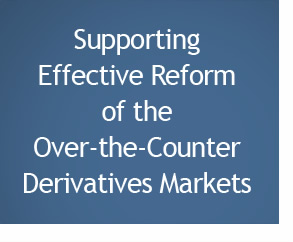05/31/11 - Financial Times - By Michael Mackenzie
|
|
Swaps trading: Habits change in anticipation of arrival of electronic trading
Interest rate swaps in the US are about to enter the 21st century. Proposed rules should bring a surge of electronic trading and open the door for new participants, such as high frequency traders.
Currently, fewer than 5 per cent of US interest rate swaps traded between banks and their clients are executed on electronic platforms, say dealers.
Instead, a vast army of sales staff, traders and brokers rely on telephone calls and e-mails pinged across Bloomberg terminals.
Such “voice trading” will be transformed with the arrival of swap execution facilities (SEFs). While there is uncertainty as to when these rules will be finalised, the industry is already preparing for the new era.
“The main [participants], banks, interdealer brokers and ‘big end’ users are ready to go,” says Paul Zubulake, senior analyst at Aite Group, a consultancy.
Already, habits are changing in anticipation of SEFs, with investors and dealers shifting more business to electronic trading.
While voice trading will be allowed for large so-called “block” trades and bespoke swaps, the vast majority of interest rate swaps – upwards of 80 per cent – could be executed in a purely electronic form, say some dealers.
Regulators, such as the Commodity Futures Trading Commission in the US, see electronic trading as a means to boost transparency, cut costs and aid the monitoring of exposure to risk.
The question for the over-the-counter swaps market – where trades are conducted directly between parties rather than via an exchange – is how jarring this transformation might be and what opportunities await for participants?
The migration of the most liquid and traded sectors of the OTC swaps market – those in the five- to 10-year sector – towards a market with the characteristics of the less flexible model of listed futures contracts, alarms big derivative dealers and investors.
It will eat into dealers’ margins and, they say, will make it more difficult for large funds to transact big trades that do not qualify as block trades.
Many big customers and dealers contend that a futures type model is the wrong approach for OTC swaps, which trade less frequently and in much larger sizes than futures.
Isda and Sifma, the main industry lobby groups, estimate that the average size of US swaps in the five- to 10-year sector is $75m, with a significant number of trades in excess of $200m.
By contrast, they say, 95 per cent of five-year Treasury notes futures trades are for less than $5m.
This is why many banks and large investors have criticised the request for quote (RFQ) trading protocol as currently proposed by the CFTC.
They argue that the proposed rule of sending an RFQ to at least five market participants could reduce liquidity – because trades will be harder to hedge – widening bid-offer spreads and thereby increasing transaction costs.
Analysts at Morgan Stanley say the higher costs of trading swaps under the Dodd-Frank act will push marginal transactions towards the Treasury and futures markets.
“Transaction and other frictional costs associated with margin, capital requirements and processing make cash and exchange-traded products more economically efficient,” says Morgan Stanley. “This will represent a major shift in the behaviour of investors who have up until now enjoyed the fluidity of the swaps market.”
While dealers and big investors are lobbying the CFTC against the futures model, others see an opportunity. “It will no longer be a market just for the big dealers,” says James Cawley, chief executive of Javelin Capital Markets, a trading platform.
The use of computer algorithms or “algos” to break up large swap trades into smaller slices is seen as a likely outcome.
The idea is that once liquid swap benchmarks move to a futures style central limit order book – where orders are electronically collected and centralised by marketmakers – there is no question that high frequency trading will result.
Algo trading in swaps will probably focus on maturities of less than five years and “small” amounts of $10m or less, following the pattern seen in the electronic transformation of equities, foreign exchange and bond trading.
But, some dealers warn that opening up the swaps market so that liquidity becomes more dependent on high frequency trading and algos – as is the case with equities – increases the risk of it evaporating during periods of turmoil.
This is not stopping some dealers from preparing for an algo-driven world.
Tabb Group, a research company, says some dealers led by Credit Suisse, Deutsche Bank, Goldman Sachs and Barclays Capital are pushing ahead with greater use of algo trading.
The move is seen as dovetailing with the rise of SEFs, as more investors gravitate towards trading in and out of Treasury bonds, futures and swaps across electronic platforms.
“Dealers that do a better job of aggregating sovereign debt, rates futures and swaps will have a significant edge,” says Adam Sussman, analyst at Tabb. |



